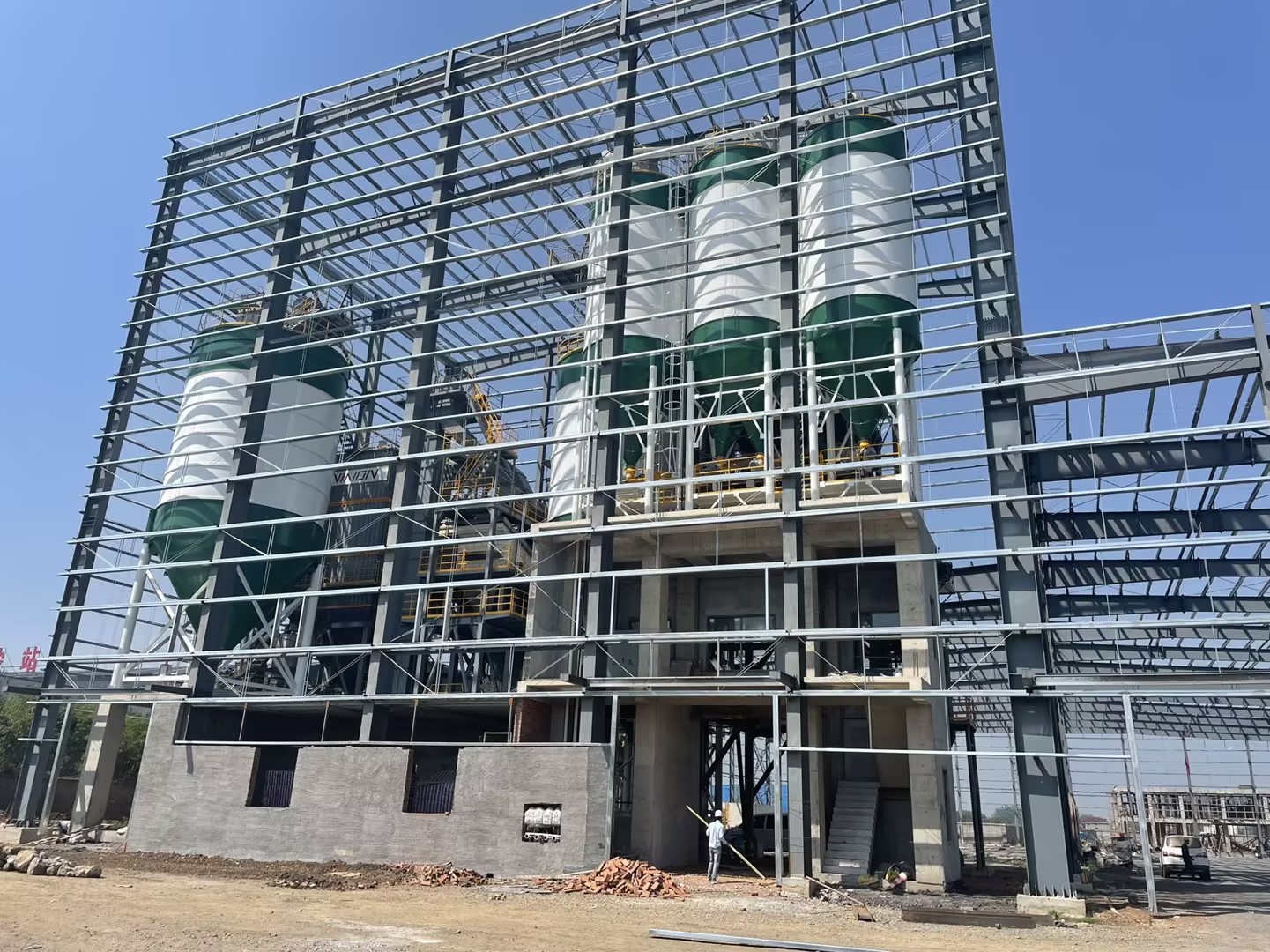Preface
The maintenance of dry mix mortar plant is of critical importance, as it directly relates to the service life of the equipment, production efficiency, product quality, and production safety. A comprehensive maintenance plan can significantly reduce unplanned downtime, lower repair costs, ensure the safety of operators, and guarantee the precision of mortar proportions. So, how to carry out effective maintenance?

Daily Maintenance of Ready Mix Mortar Plant (Before/After Each Operation or Daily)
(1) Cleaning
◆External of ready mix mortar plant: Remove dust, oil stains, and mortar residues from dry mix mortar plant's surface (especially motors, reducers, and control cabinets) to prevent overheating and corrosion.
◆Internal of dry mix mortar plant: Thoroughly clean mortar residues from inside the mixing main machine, discharge ports, screw conveyors, bucket elevator hoppers, packaging machine silos, etc. This prevents caking and hardening, which may affect subsequent production or cause blockages—particularly important before changing formulas or shutting down the ready mix mortar plant.
◆Work Area: Keep the floor around the dry mix mortar plant clean, free of accumulated materials, oil stains, and water stains to prevent slips and material contamination.
(2) Inspection
◆Operating Status: Before startup, check all components for obvious looseness, deformation, abnormal noise, or unusual vibration.
◆Lubrication Points: Visually inspect each lubrication point (bearings, chains, gears, slide rails, etc.) for sufficient lubricating grease and check for leaks.
◆Fasteners: Quickly check key parts of ready mix mortar plant(e.g., mixing blade bolts, motor base bolts, protective cover bolts) for signs of looseness.
◆Pneumatic/Oil Lines: Check air pipes and oil pipes for damage or leakage.
◆Safety Protection Devices: Confirm that all protective covers, emergency stop switches, and safety interlock devices are intact and functional.
(3) Lubrication (as required)
In accordance with specifications and usage frequency of dry mix mortar plant, perform supplementary lubrication on points requiring daily or per-shift grease application (e.g., some bearing housings). Use the correct lubricant!
(4) Post-operation Treatment
Prior to long-term shutdown or formula change, ensure thorough cleaning of residual materials inside the ready mix mortar plant.
Periodic Maintenance (Weekly/Monthly/Quarterly)
(1) Lubrication System Maintenance of Dry Mix Mortar Plant
◆ Strictly implement the lubrication plan in accordance with the lubrication charts provided by the dry mix mortar plant manufacturer, including the location of lubrication points, type of lubricant, filling quantity, and cycle (weekly, monthly, quarterly, annual).
◆ Regularly clean or replace the filter elements and oil cups of the automatic lubrication system.
◆Check the oil level and oil quality of reducers and hydraulic stations, and replace lubricating oil/hydraulic oil according to the specified cycle.
(2) Inspection and Fastening of Fasteners
Systematically inspect and fasten all bolts and nuts, especially parts subject to vibration and load (such as mixing arms/blades, motor/reducer bases, frame connections, elevator chain tensioning devices, screen fixing devices, etc.).
(3) Inspection of Key Moving Parts of Ready Mix Mortar Plant
◆Bearings: Check for overheating, noise, and abnormal vibration; replace if necessary. Regularly replenish or replace grease.
◆Chains/belts: Check for wear, tension, and alignment. Overly worn or loose chains/belts should be adjusted or replaced promptly.
◆Gears: Check for wear, meshing condition, and proper lubrication.
◆Mixing blades/liners: Check the degree of wear; severely worn or deformed ones must be replaced promptly to ensure mixing efficiency and prevent ready mix mortar plant scratching.
◆Seals: Inspect mixing shaft seals, discharge door seals, cylinder seals, etc., for leaks; replace failed seals in a timely manner.
(4) Inspection of Conveying System of Dry Mix Mortar Plant
◆Screw conveyors: Check for wear of screw blades, condition of hanging bearings, and whether troughs are deformed, worn, or perforated.
◆Bucket elevators: Inspect hopper wear/deformation, belts/chains and their joints, tensioning devices, wear condition of head and tail wheels, and whether the barrel is misaligned.
◆Belt conveyors: Check for belt wear/tearing, flexibility of idler rotation, wear/lagging condition of rollers, and tensioning devices.
(5) Screening Systems Maintenance of Dry Mix Mortar Plant (if applicable)
Clear blockages on the screen mesh. Check for screen mesh damage or excessive wear, and replace promptly.Inspect the condition and tightness of vibration motors or vibrators.
(6)Pneumatic System Maintenance of Ready Mix Mortar Plant
Regularly drain water from air receivers and filters. Check the operating status of pneumatic triplets (filter, pressure reducing valve, oil mist lubricator); add lubricating oil promptly (if applicable), and clean or replace filter elements.Inspect whether cylinders operate smoothly and if air pipe joints have leaks.
(7) Electrical System Maintenance of Dry Mix Mortar Plant
Clean dust inside control cabinets (perform after power is disconnected!).Check if all terminal blocks are tight and free of overheating discoloration. Check if motor fan covers are blocked, and if motor of ready mix mortar plant operating temperature, sound, and vibration are normal.Inspect sensors such as limit switches, proximity switches, and photoelectric switches for cleanliness, accurate positioning, and proper functionality.
(8) Calibration and Maintenance of Weighing Systems
◆Regular calibration: Calibrate weighing hoppers and packaging scales with standard weights according to the schedule (weekly/monthly/quarterly, or based on production accuracy requirements) to ensure metering precision. This is critical for guaranteeing product quality!
◆Inspecting sensors: Check that load cells and their connections are clean, free of jamming, and show no signs of overloading.
◆Inspecting pneumatic components: Ensure that the cylinders or pneumatic valves of weighing hoppers operate quickly, position accurately, and maintain good sealing.

